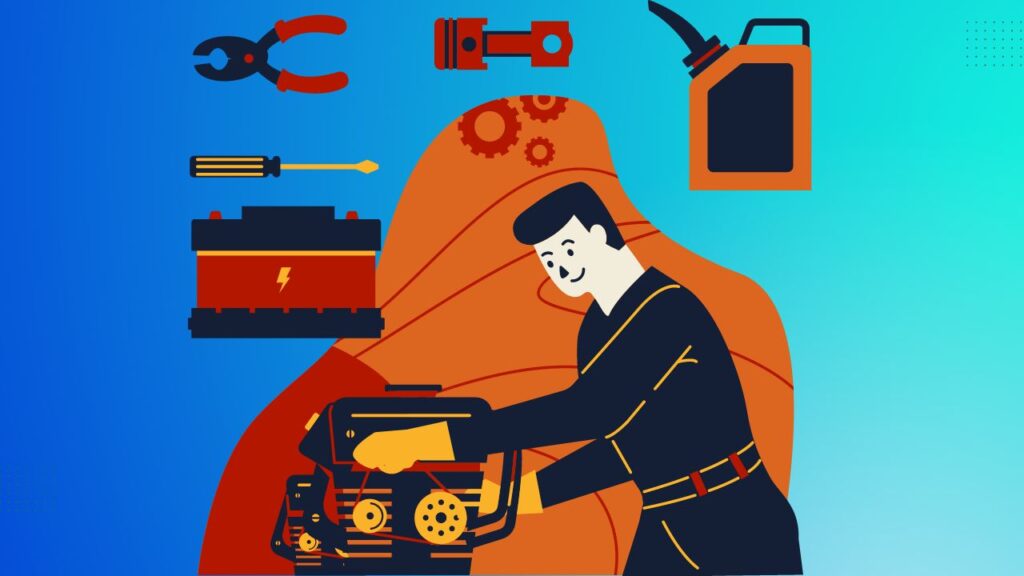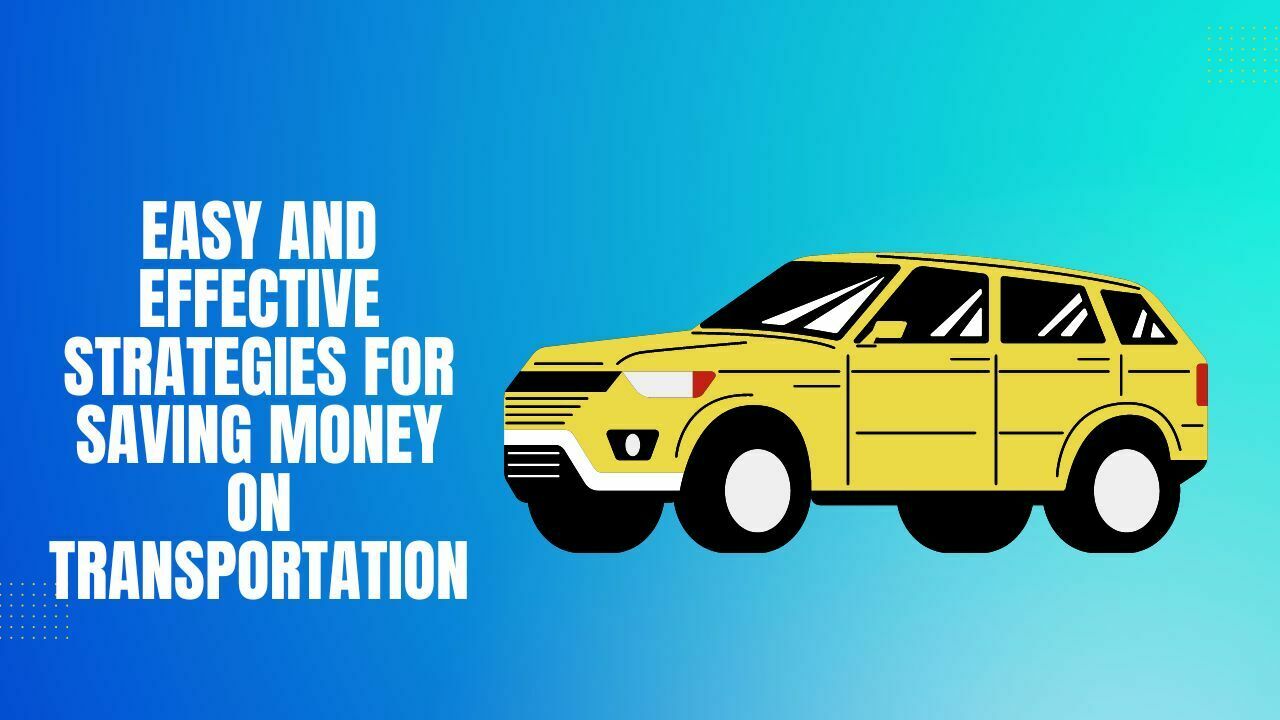Did you know that transportation expenses are one of the biggest drains on our wallets?
According to the Bureau of Labor Statistics, the average American household spends over $9,000 a year on transportation costs alone.
And for millennials, who are already facing financial challenges like student loan debt and rising housing costs, this can be a real struggle.
But don’t worry, because there are plenty of easy and effective strategies for saving money on transportation that can make a big difference in your finances.
Whether you’re driving, taking public transportation, or using ride-sharing apps, there are a variety of ways to cut down on your transportation expenses without sacrificing your quality of life.
If you’re looking to save money on transportation, consider these effective strategies: plan your routes and trips, optimize your vehicle for fuel efficiency, explore alternative transportation options like biking or car sharing, and use technology to find cheap gas and efficient ride-sharing apps.
In this article, we’ll explore some of the best strategies for saving money on transportation specifically tailored to millennials.
From optimizing your vehicle and planning your trips to exploring alternative transportation options and using technology to your advantage, we’ve got you covered.
So let’s dive in and start saving some money on transportation!
1. Plan Your Routes and Trips

Planning your routes and trips is one of the easiest and most effective ways to save money on transportation.
Here are two strategies you can use to save money on your transportation expenses:
1.1 Research Routes
- Google Maps is a great tool for finding the most efficient routes. It takes into account traffic patterns and offers multiple options for routes. This helps you save time and money on gas.
- Public transportation is also a great option to consider. It can be cheaper than driving and often takes you to the same destination faster due to traffic or parking.
1.2 Consolidate Trips
- Planning errands in one trip can save you money on gas and time. By combining multiple stops, you can cut down on your travel time and save money on gas.
- Carpooling with friends or co-workers can also be a great way to save money on transportation. Sharing a ride with others cuts down on your gas expenses and it’s also better for the environment.
To better illustrate the benefits of planning your routes and trips, here’s a table showing the potential savings from using Google Maps and public transportation versus driving solo:
| Transportation Method | Cost per Week | Cost per Month | Cost per Year |
| Driving Solo | $50 | $200 | $2,400 |
| Google Maps | $35 | $140 | $1,680 |
| Public Transportation | $20 | $80 | $960 |
As you can see, using Google Maps and public transportation can save you hundreds of dollars each year compared to driving solo.
Additionally, consolidating your trips and carpooling can further reduce your transportation expenses.
So next time you plan a trip or errands, take a few minutes to research your options and plan your routes to save money on transportation.
Your wallet (and the environment) will thank you!
2. Optimize Your Vehicle

Optimizing your vehicle is another effective way to save money on transportation.
Here are two strategies you can use to optimize your vehicle and reduce your transportation expenses:
2.1 Regular Maintenance
- Regular maintenance is important to keep your vehicle in good condition and reduce the likelihood of breakdowns or expensive repairs.
- Checking tire pressure and alignment can also improve fuel efficiency and save you money on gas.
2.2 Fuel Efficiency
- Using fuel-efficient driving techniques, such as accelerating slowly and maintaining a steady speed, can significantly improve your vehicle’s fuel efficiency.
- Choosing a fuel-efficient vehicle, such as a hybrid or electric car, can also save you money on gas in the long run.
To better illustrate the benefits of optimizing your vehicle, here’s a table showing the potential savings from regular maintenance and choosing a fuel-efficient vehicle:
| Vehicle Optimization Method | Cost per Week | Cost per Month | Cost per Year |
| Regular Maintenance | $10 | $40 | $480 |
| Fuel-Efficient Vehicle | $20 | $80 | $960 |
As you can see, optimizing your vehicle can save you hundreds of dollars each year.
By investing in regular maintenance and choosing a fuel-efficient vehicle, you can reduce your transportation expenses and save money in the long run.
So if you’re looking for easy and effective ways to save money on transportation, consider optimizing your vehicle.
Not only will it save you money, but it will also extend the life of your vehicle and reduce your environmental impact.
3. Explore Alternative Transportation Options

Exploring alternative transportation options can also help you save money on transportation.
Here are two options to consider:
3.1 Biking and Walking
Biking and walking are great alternatives to driving, especially for short trips.
In addition to saving money on gas and car maintenance, biking and walking are also great for your health and the environment.
Here are some tips to help you bike and walk safely and efficiently:
- Plan your route ahead of time
- Wear appropriate safety gear, such as a helmet and reflective clothing
- Follow traffic laws and signals
- Consider using bike lanes or trails when available
3.2 Car Sharing
Car sharing is a great option for millennials who don’t own a car or need a second car for occasional use.
Popular car-sharing options include Zipcar, Car2Go, and Turo.
Here’s a table showing the potential savings from using car-sharing options:
| Car Sharing Option | Cost per Hour | Cost per Day | Cost per Month |
| Zipcar | $7.50 | $70 | $275 |
| Car2Go | $0.35/min | $84 | $300 |
| Turo | Varies | Varies | Varies |
As you can see, using car-sharing options can be significantly cheaper than owning a car, especially if you only need a car for a few hours or days.
So if you’re looking for easy and effective ways to save money on transportation, consider exploring alternative transportation options like biking and walking or car sharing.
By reducing your reliance on traditional transportation methods, you can save money and reduce your environmental impact.
4. Use Technology to Your Advantage

Technology can also help you save money on transportation.
Here are two ways you can use technology to your advantage:
4.1 Finding Cheap Gas
Gas apps like GasBuddy and Waze can help you find the cheapest gas prices in your area.
Rewards programs like Shell’s Fuel Rewards program and ExxonMobil’s Speedpass+ app can also help you save money on gas.
4.2 Ride-Sharing Apps
Popular ride-sharing apps like Uber and Lyft can be a cost-effective alternative to traditional taxis.
Here are some tips for using ride-sharing apps efficiently:
- Compare prices between different ride-sharing apps
- Use promo codes and referral codes to get discounts on your rides
- Consider carpooling with friends or coworkers to split the cost of your ride.
Here’s a table showing the potential savings from using ride-sharing apps:
| Ride Sharing App | Average Cost per Mile |
| Uber | $1.50 – $3.00 |
| Lyft | $1.80 – $2.00 |
As you can see, using ride-sharing apps can be a cost-effective alternative to traditional taxis, especially if you’re traveling a short distance.
By using technology to your advantage, you can save money on transportation expenses.
Whether you’re using gas apps to find the cheapest gas prices or ride-sharing apps to get around town, these tools can help you save money and reduce your overall transportation costs.
5. Consider Your Commute Options

Let’s look at commute options and how they can save you money on transportation.
5.1 Work From Home
Working from home is becoming more and more popular. With technology advancements, it’s easier than ever to work remotely.
Research shows that remote workers save an average of $4,000 per year on transportation costs.
That’s a lot of money!
Exploring work-from-home options
If you’re interested in working from home, start by exploring your company’s policies on remote work.
Talk to your boss and see if you can work from home, even if it’s just a few days per week.
Benefits of Working from Home
Besides saving money on transportation, working from home has many other benefits.
It can improve work-life balance, reduce stress, and increase productivity.
5.2 Flexible Work Hours
Flexible work hours can also help you save money on transportation.
By avoiding rush hour traffic, you can save time and money on gas.
Advantages of flexible work hours
Flexible work hours allow you to schedule your work around your life, instead of the other way around.
This can reduce stress and improve work-life balance. Plus, it can save you money on transportation.
Tips for negotiating flexible work hours
When negotiating flexible work hours, be sure to emphasize the benefits to your employer, such as increased productivity and reduced stress.
Also, be open to compromise and be willing to demonstrate your ability to work independently.
Overall, exploring commute options like working from home and flexible work hours can save you money on transportation, improve your work-life balance, and reduce stress.
Bottom Line…
Well, we’ve covered a lot of ground (pun intended!) when it comes to saving money on transportation!
I hope you found some of these tips helpful and can apply them to your daily life. Remember, even small changes can add up to big savings over time.
Did you know that the average American spends over $9,000 a year on transportation expenses?
By implementing some of the strategies we discussed, you can significantly reduce that number and keep more money in your pocket.
From optimizing your vehicle and exploring alternative transportation options to using technology to your advantage and considering your commute options, there are many ways to save money on transportation.
So, why not give some of these strategies a try and see how much you can save?
Your wallet (and future self) will thank you!

1 thought on “Easy and Effective Strategies For Saving Money on Transportation”